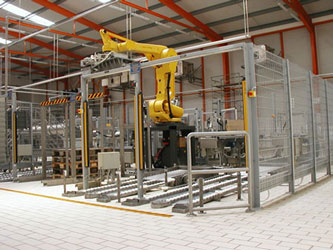Zenon Automation latest articles
- Details
Palletizing technologies and their importance in increasing productivity and facilitating the supply chain
In the field of industrial production and distribution of products, the pallet is the product transfer unit from production to the warehouse or the final customer. Proper management is critical in order not to add additional costs to existing packaging processes but also to ensure a smooth flow of products within the supply chain. What is required is the right pallet with the right product to arrive at the right destination in time, safely and at the lowest possible cost.
The purpose of this article is to present new methods and technologies at the various stages of pallet formation (building, wrapping and marking) that contribute to (a) reducing production costs; (b) safeguarding productivity; and (c) and product safety and quality. The investment on the above offers a competitive advantage to the enterprises and creates the conditions for strengthening their position in the domestic and international supply chain.
- Details
End-of-line automation for the Greek food industry
In an effort to improve competitiveness, the Greek food industry incorporates new methods and technologies which contribute to (a) the reduction of production costs, and (b) the improvement of product safety and quality. Investments in these two areas create the conditions to reverse the economic crisis by reinforcing the position of enterprises in the local and international markets.
The adoption of robotic systems regards mainly the end-of-line automation, namely product case packing and palletizing. The first systems were installed in the beginning of the 1990s and have been increasing ever since, providing multiple benefits when it comes to cost reduction and increase of efficiency. Experience from systems installed in Greece shows that, in the case of factories running three 8-hour shifts, investment in a robotic case packing or palletizing system can be depreciated in less than two years.
ZENON AUTOMATION SAICT
VAT Number: 998383064, Registration Number: 008716201000
17, Agiou Athanassiou Str., GR-19002, Peania, Attica, Greece
Tel: +30 210 6690900, +30 210 6047000, Fax: +30 210 6640200
Theodorou Group Member





